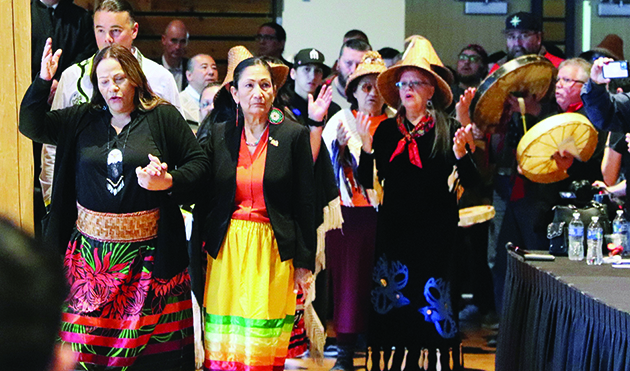
“We were all silenced. We don’t tell-all because we can’t tell all – because we might get a spanking. There was a lot of things I’ve seen, a lot of things I heard, a lot of things I don’t want to remember. We kept our secrets all this time. We don’t talk about it; we should talk about it. It’s okay to heal, we are not healed yet. I’m 99 years old and I’m still healing yet. It’s hard. It’s very hard.”
-Ernestine Lane, Lummi Nation
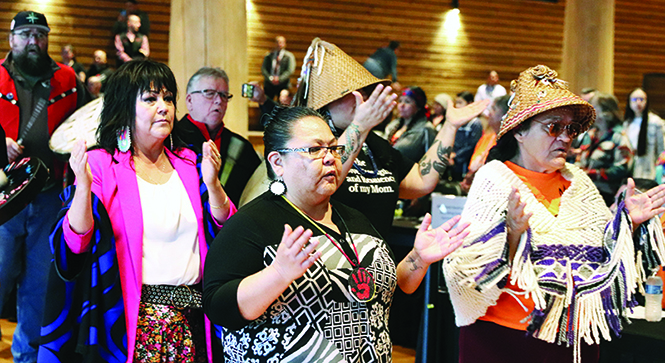
By Kalvin Valdillez, Tulalip News
In the late 1800’s, the US government made it their mission to erase the cultural identity of the Indigenous population by establishing boarding schools throughout the country. The official slogan for the Civilization Fund Act was ‘kill the Indian, save the man’. Children as young as three were forcibly removed from their families and tribes to attend these horrific assimilation academies. And if the children spoke their ancestral languages or practiced any of their traditions at the boarding schools, they were punished harshly and faced physical, emotional, and mental abuse. These institutes continued with these practices well into the sixth decade of the nineteenth century.
Resilient is a word that this current generation of Native people identify with because they are actively putting in work to revitalize and recover their languages, dances, songs, and traditional way of life. And after decades of attempts, from both religious and governmental institutions, at demonizing our people and practices, we are still here, and we are still standing strong.
Many of today’s Indigenous activists and cultural bearers are quick to credit the older generations who experienced the atrocities committed by the boarding schools, and who held strong and passed on their traditions to the next generations. For Tulalip, there are several prime examples of resilient tribal members who preserved the culture despite harsh assimilation efforts. One such individual is always held in high honor for the sacrifices she made to ensure that the history and traditions of the sduhubš people are accessible to their future generations for many years to come, and she is none other than Harriette Shelton-Dover.
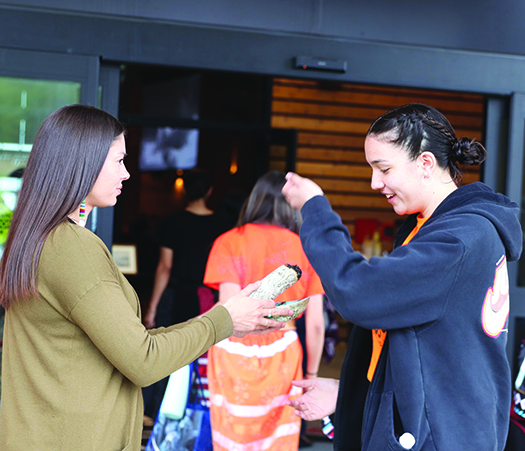
On the morning of April 23, the reason why many Coast Salish children bravely endured lashings, beatings, or solitary confinement, and the reason why many children were laid to rest at a young age, was on full display at the Tulalip Gathering Hall. The reason they made those sacrifices could be seen on the button-designed shawls and vests, the cedar-woven hats and headbands. Those sacrifices could be heard on the elk and deer skin hand drums, and in the voices of their descendants who utilized their ancestral language, in both song and prayer. The sacrifices were present in every dance step, in each bite of salmon during the lunch hour, and through the act of smudging with sage bundles every time someone walked through the doors of the Gathering Hall. Those sacrifices were made by young children who kept the cultural fire burning in the darkest of times.
The price those elders and ancestors paid did not end with corporal punishment at the boarding schools. Over time, due to the threat of those punishments, they learned to hold their emotions in, which resulted in heavy baggage that was also passed down their lineage. And though most boarding schools have been disestablished, the trauma wounds they caused are still very much exposed and present in every Native community throughout North America.
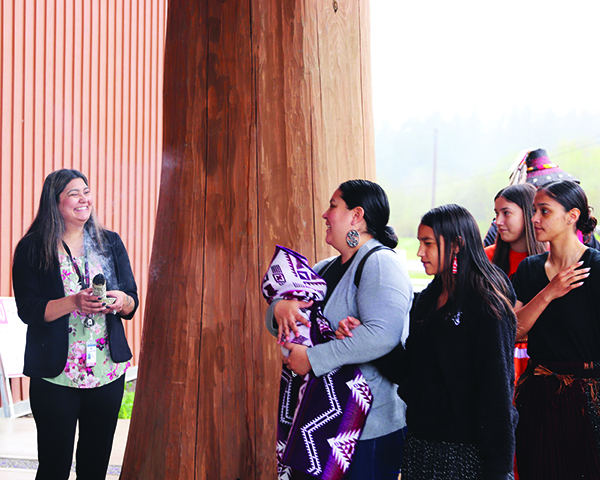
Until recent years, the history of Indian boarding schools remained widely unknown to the general population. The first step in healing those trauma wounds was simply making people aware of the damage caused and the lives lost during the boarding school era, as well as getting the federal government to acknowledge their role in the attempt of cultural genocide.
In 2021, the first Native American to serve as a US Cabinet Secretary, Deb Haaland (Laguna Pueblo), launched the Federal Indian Boarding School Initiative to investigate what took place at these schools by reviewing records and speaking to the tribal nations that were affected by Civilization Fund Act. The results of that investigation, released in May 2022, show that between the years of 1819 and 1969, the US operated or supported 408 boarding schools across 37 states, along with at least 53 burial sites for Indigenous children.
In the following months, Secretary of Interior Haaland and Bryan Newland (Bay Mills Indian Community), the Assistant Secretary of Indian Affairs, organized a yearlong journey across the nation, known as the Road to Healing Tour. The goal behind the tour is ‘to connect communities with trauma-informed support and facilitate collection of a permanent oral history’.
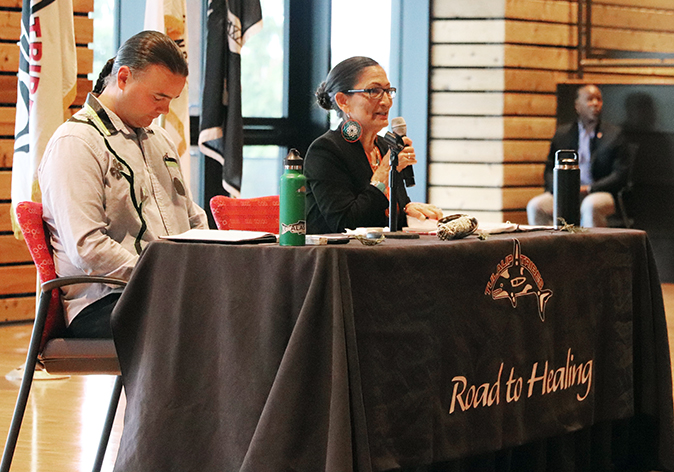
The Road to Healing made its sixth stop of the tour at the Tulalip Gathering Hall. In addition to the 200 or so tribal members in attendance, a group of professionals from Indian Health Services, whose expertise is in trauma-informed care, were at-hand to support the boarding school survivors and their decedents throughout the day.
Secretary Haaland was escorted to the front of the Gathering Hall by a group of Tulalip singers as they opened the ceremony with the sduhubš welcome song, also known as Harriette Shelton-Dover’s song. After blessing all four corners of the longhouse-style hall, cultural bearer Glen Gobin shared a brief history of boarding schools at Tulalip.
He shared, “There were three phases of the boarding school. Father Chirouse came shortly after the treaty signing, he set up a school at the mouth of Quil Ceda. Then he moved it down towards Priest Point and actually built a school there – that’s why it’s called Priest Point. And as our children passed away, he started a cemetery there also. I was doing research and I saw that my grandma’s sister, age 6, was one of those who died and is buried at that cemetery.
“And then, I believe it was in the late 1860’s, the Sisters of Providence petitioned the government to start a school. That school was across the bay where Mission Cemetery is today – and that’s why there is a cemetery there. As the children passed away, they were buried around the school grounds.
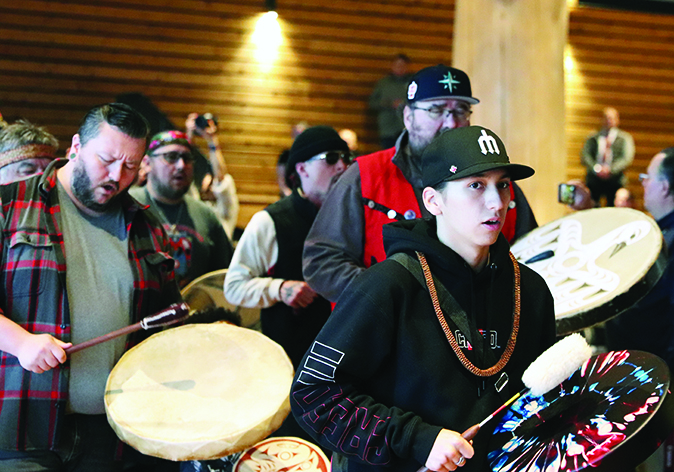
“That [school] burned down in the late 1800s and then the government took the program back and said, ‘we’re going to run this ourselves now’. And so, in the early 1900s, the boarding school was developed – that was ran like a military camp. And as we heard many of our elders talk throughout the years, what they knew, or witnessed, or what our grandparents told them – was about the constant marching, the constant inability to speak their language, the constant inability to see their family when they wanted to, because they were taken away and brought to the schools to civilize them.”
Following introductions by both Deb Haaland and Bryan Newland, they opened the floor for the survivors, and their descendants, to share how they were affected by the Indian boarding schools.
Virginia Bill, daughter of survivor Lottie Sampson (Swinomish/Upper Skagit) stated, “When she got here to Tulalip, she did talk of having to be marched everywhere. She talked about that bell that would ring. I think it was in the 1980s, we were brought here to a ceremony to commemorate that bell. I found my mom sitting alone by herself, and I asked her what she was thinking. She said, ‘Thank God, that silence. No more will that bell tell me where to go, where to be’. I read some documents that said they were going to make Tulalip the Carlisle of the Northwest. I read some of the official papers, where the former priest that was here referred to our families as savages. When you read those articles, it breaks your heart. There are no commemorative plaques, no ribbons, there are no stories telling us about the success of our mothers and fathers – there is no ‘congratulations, you made it’.”
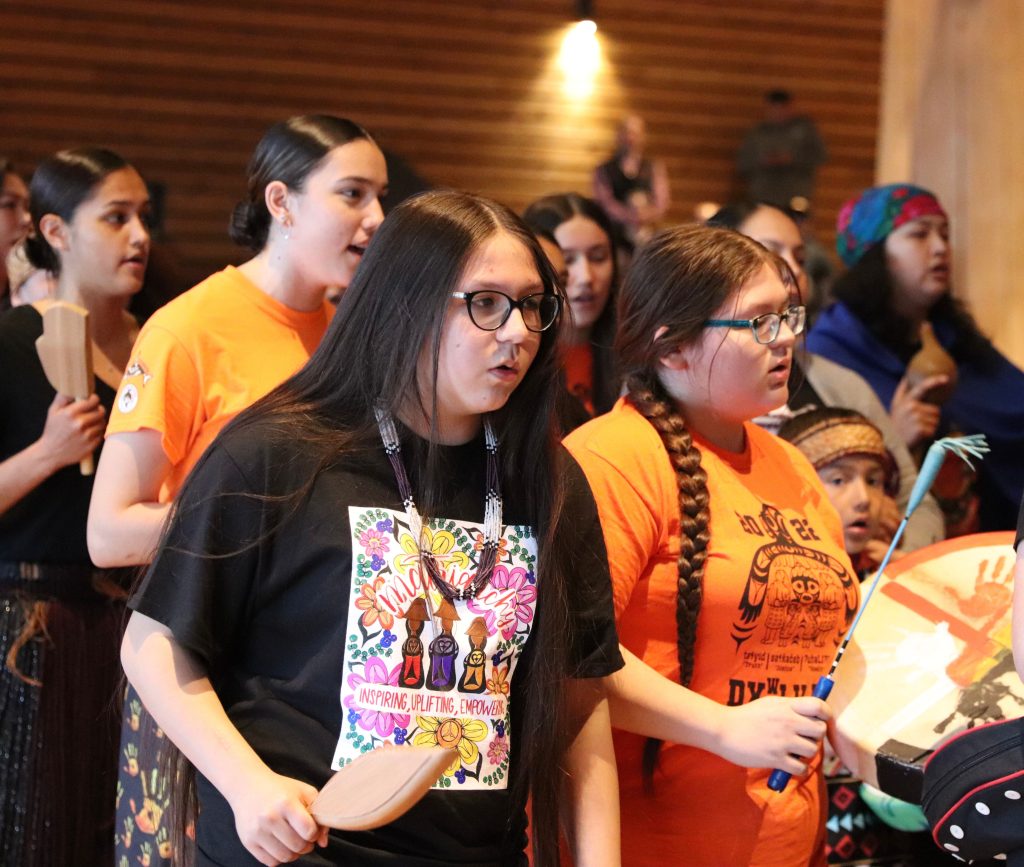
Boarding School survivor and Lummi tribal member, Jewell James, said, “My great-grandfather talked about how they would burn his tongue and torture him, and stick his tongue on frozen pipes outside during the winter every time he used his Lummi language. It was a real traumatic experience. My mother, when she was three, ended up at Cushman (Indian Hospital). And she battled with depression. There was no job or income or food on the reservation, so it was either Cushman or you starve. And she would always talk and cry about how at the age of three, they put her in the basement with the rats and blocked off all the lights. She’d always talk about how she had to hide in the corner and hope the rats didn’t get her.”
The tears were pouring as boarding school survivor Matthew War Bonnet Jr. (Lakota), recounted his boarding school experience. He said, “at nighttime, in the dormitories, the kids would cry because they were lonesome for their parents. Sometimes the priest who shared a little room off to the side, would get disturbed about that. He would come out with his belt, pick up a kid off the bed and whack them for crying. When you’re six years old and you see that, you get scared, you start holding things in.”
After about two hours and several testimonies, Haaland and Newland called for the first break, and a traditional Tulalip lunch was served to the people. During this time, they asked for all the media outlets to excuse themselves for the day. The following sessions provided the opportunity for more survivors to detail their experiences at the boarding schools, while delving deeper into topics that they were not comfortable sharing in front of the cameras. From what we gathered through social media, the event extended into the late Sunday evening. Important work took place, and the healing process began for many, as they opened up for the first time about the terrible things that occurred at the schools in a private and supportive setting.
Secretary Haaland expressed, “Your voices are important to me, and I thank you for your willingness to share your stories. Federal Indian Boarding School policies have touched every Indigenous person I know. Some are survivors, some are descendants, but we all carry this painful legacy in our hearts. Deeply ingrained in so many of us is the trauma that these policies in these places have inflicted. My ancestors and many of yours endured the horrors of Indian boarding school assimilation policies carried out by the same department that I now lead. This is the first time in history that the United States Cabinet Secretary comes to the table with the shared trauma – that is not lost on me. And I’m determined to use my position for the good of the people.”
She continued, “In Washington state alone, there were 15 boarding schools, leaving intergenerational impacts that persists in the communities represented here today. It is my department’s duty to address the shared trauma that so many of us carry. To do that, we need to tell our stories. Today is part of that journey – I want you all to know that I’m with you on this journey. I will listen, I will agree with you, I will weep, and I will feel your pain. As we mourn what we have lost, please know that we still have so much to gain. The healing that can help our communities will not be done overnight, but I believe very strongly that it will be done. This is one step among many that we’ll take together to strengthen and rebuild the bonds within Native communities that Federal Indian Boarding School policies set out to break. Those steps have the potential to alter the course of our future.”